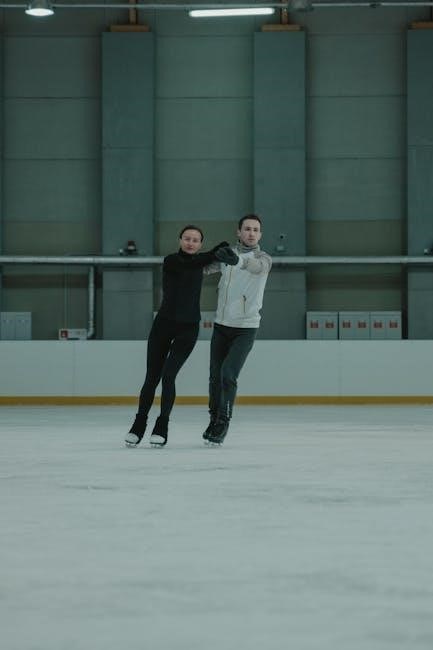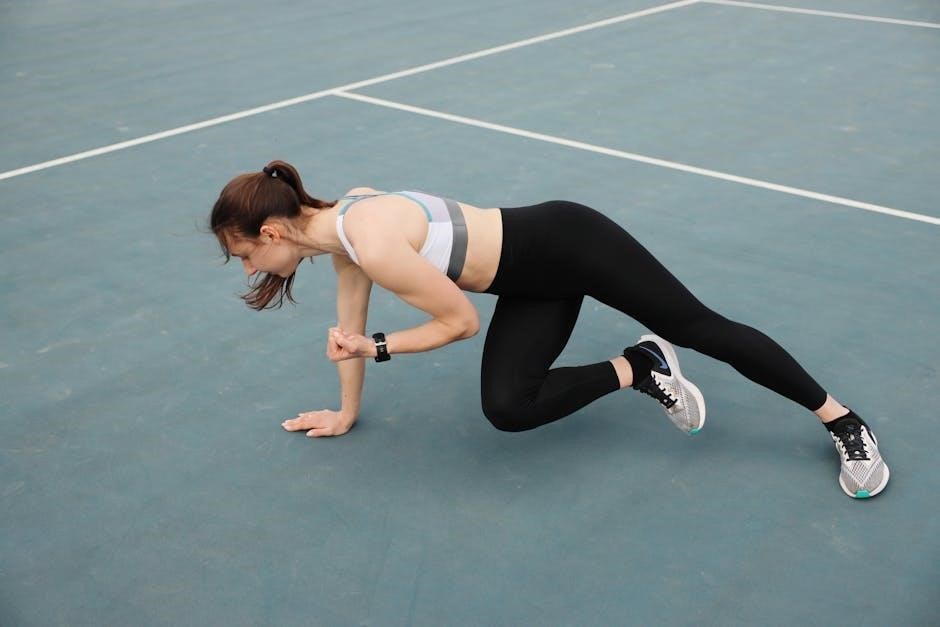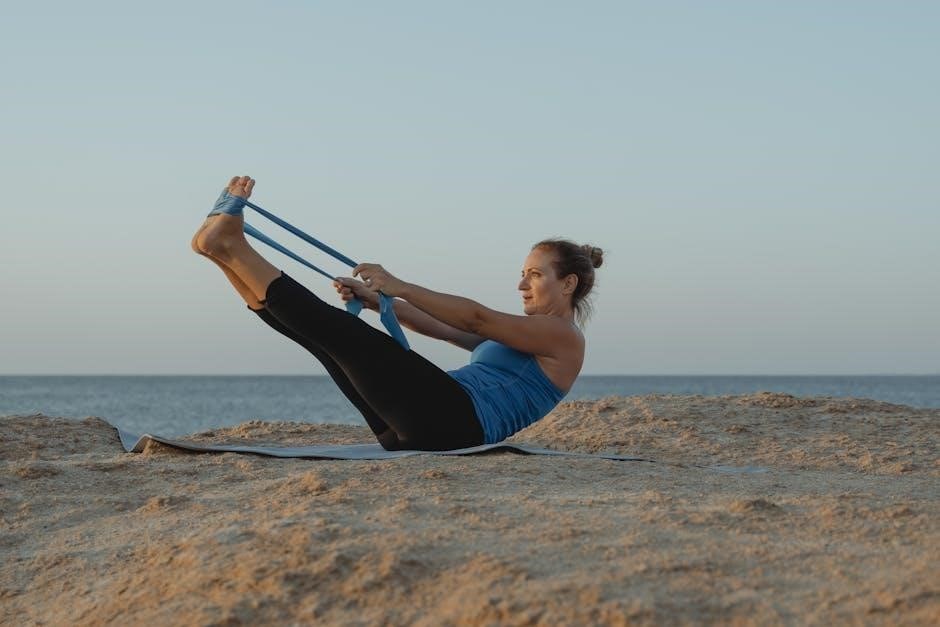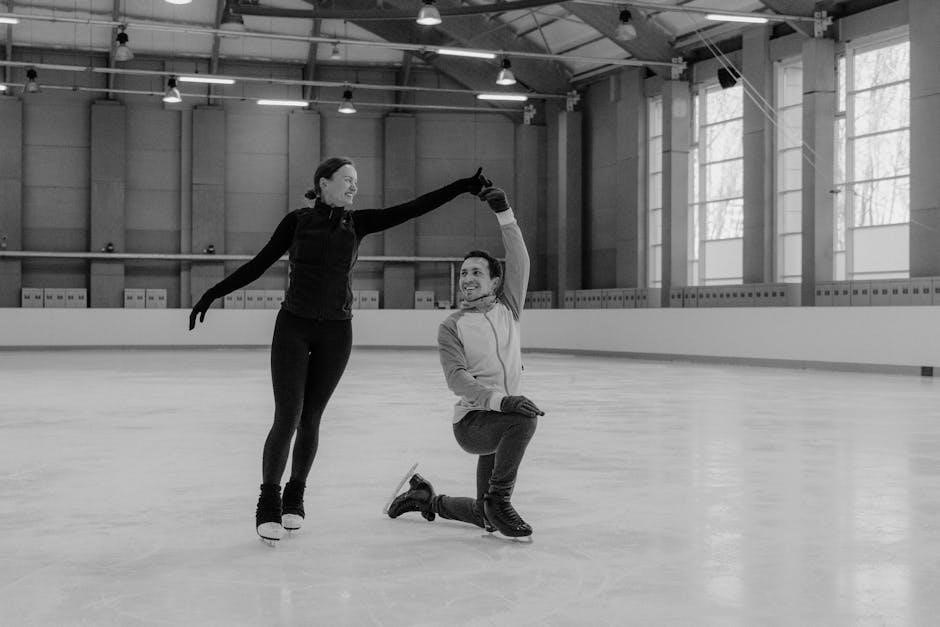Exercises for posterior tibial tendon dysfunction are crucial for rehabilitation and strengthening the tibialis posterior muscle‚ improving lower leg stability‚ and alleviating associated symptoms‚ as outlined in the Alvarez protocol‚ using mobility bands and visual biofeedback techniques effectively always.
Overview of Posterior Tibial Tendon Dysfunction
Posterior tibial tendon dysfunction is a condition that affects the tendon connecting the posterior tibial muscle to the bones in the foot‚ leading to pain and instability. This condition is now formally recognized as Progressive Collapsing Flatfoot Disorder. The posterior tibial tendon plays a crucial role in supporting the arch of the foot and facilitating movement. When this tendon is damaged or inflamed‚ it can cause a range of symptoms‚ including pain‚ swelling‚ and difficulty walking. According to research‚ posterior tibial tendon dysfunction can be caused by a variety of factors‚ including overuse‚ trauma‚ and certain medical conditions. A comprehensive understanding of the condition is essential for developing effective treatment plans‚ including exercises and rehabilitation programs. By addressing the underlying causes and symptoms of posterior tibial tendon dysfunction‚ individuals can reduce their risk of further injury and improve their overall foot health. Effective management of the condition requires a multidisciplinary approach‚ incorporating medical treatment‚ physical therapy‚ and lifestyle modifications.

Causes and Symptoms of Posterior Tibial Tendon Dysfunction
Causes include overuse‚ trauma‚ and medical conditions‚ with symptoms like pain‚ swelling‚ and difficulty walking‚ affecting the posterior tibial tendon and foot arch‚ requiring medical attention and treatment always effectively.
Importance of Early Treatment and Exercise
The importance of early treatment and exercise for posterior tibial tendon dysfunction cannot be overstated‚ as it plays a crucial role in preventing further deterioration and promoting recovery. Early intervention helps to reduce pain and inflammation‚ improve mobility‚ and strengthen the surrounding muscles. A well-structured exercise program‚ such as the one outlined in the Alvarez protocol‚ can help to alleviate symptoms and improve functional ability. The use of mobility bands and visual biofeedback techniques can also be beneficial in enhancing the effectiveness of the exercise program. Furthermore‚ early treatment and exercise can help to prevent the development of secondary complications‚ such as flatfoot deformity‚ and improve overall quality of life. It is essential to seek medical attention and begin a treatment program as soon as possible to achieve optimal outcomes and prevent long-term damage. Regular exercise and physical therapy can help to promote healing and restore normal function to the affected tendon and surrounding tissues.

Alvarez Protocol for Posterior Tibial Tendon Dysfunction
Alvarez protocol involves a pretreatment phase with a home exercise program‚ using mobility bands‚ to reset receptor cells and improve blood flow‚ always effectively.
PRETREATMENT PHASE and Home Exercise Program
The pretreatment phase of the Alvarez protocol for posterior tibial tendon dysfunction involves a home exercise program‚ which is initiated to improve mobility and reduce symptoms. This program includes sole-to-sole exercises‚ which are designed to strengthen the tibialis posterior muscle and improve lower leg stability. The use of mobility bands is also recommended‚ as it affects blood flow to the area and speeds up healing. The home exercise program is typically initiated before any other treatment‚ and it is essential to follow the program consistently to achieve optimal results. The program may include exercises such as looping a towel around the involved foot and gently pulling until a stretch is felt in the calf. The exercises should be performed slowly and eased off if pain occurs. A healthcare professional will provide guidance on the exercises and the frequency of the sessions. Regular practice and patience are essential for the success of the home exercise program.

Exercises for Posterior Tibial Tendon Dysfunction
Exercises include ankle bends‚ toe raises‚ and calf stretches to strengthen the tibialis posterior muscle and improve lower leg stability always effectively using mobility bands and visual biofeedback techniques.
Examples of Stretching Exercises for the Calf
Examples of stretching exercises for the calf include sitting on the floor with the affected leg straight out in front‚ looping a towel around the foot‚ and gently pulling the towel back until a stretch is felt in the calf. This exercise can be performed with the knee straight or bent‚ depending on the specific area of tension. Another exercise is to stand facing a wall with one hand on the wall for balance‚ step the affected leg back about a foot‚ and keep the heel on the ground‚ bending the front knee and leaning forward until a stretch is felt in the calf. These exercises can be modified to suit individual needs and can be performed multiple times a day. It is essential to start slowly and gently‚ easing off if pain occurs‚ and to consult with a healthcare professional for proper guidance and instruction on performing these exercises correctly and safely. Regular practice of these exercises can help improve flexibility and reduce tension in the calf muscles;
Rehabilitation of Posterior Tibial Tendinopathy
Rehabilitation involves strengthening exercises and mobility bands to improve function and reduce pain effectively always using proper techniques.
Modifications to the Guideline Based on Individual Needs
Modifications to the guideline are essential to ensure effective rehabilitation‚ as each individual’s needs and circumstances are unique. The rehabilitation program should be tailored to address specific tissue healing timelines‚ chronicity of injury‚ and other contributing impairments. A physician’s instruction plays a crucial role in determining the necessary modifications‚ and it is essential to follow their guidance. The use of mobility bands‚ for instance‚ may need to be adjusted based on the individual’s level of pain and discomfort. Additionally‚ the frequency and duration of exercises may need to be modified to accommodate the individual’s lifestyle and capabilities. By making these modifications‚ individuals can maximize the benefits of the rehabilitation program and achieve optimal outcomes. The goal is to create a personalized program that addresses the individual’s specific needs and promotes successful rehabilitation. This approach ensures that the exercises are effective and safe for each individual.
Balance Improvement Exercises Using Visual Biofeedback
Exercises using visual biofeedback improve balance and stability‚ enhancing rehabilitation outcomes with regular practice and patience always using techniques effectively.
Effect of Age and Training Schedules on Exercise Outcomes
The effect of age on exercise outcomes for posterior tibial tendon dysfunction is a significant consideration‚ as older adults may require modified exercise programs to accommodate decreased mobility and flexibility. Research has shown that training schedules can also impact exercise outcomes‚ with consistent and regular practice yielding better results. A study on the effect of age and training schedules on balance improvement exercises using visual biofeedback found that older adults who practiced regularly showed significant improvements in balance and stability. The use of visual biofeedback techniques can help individuals of all ages to improve their exercise outcomes by providing real-time feedback and guidance. Additionally‚ modifying exercise programs to accommodate individual needs and abilities can help to optimize outcomes and reduce the risk of injury or exacerbation of symptoms. By taking into account the effects of age and training schedules‚ individuals can develop effective exercise programs to manage posterior tibial tendon dysfunction and improve overall health and well-being. Regular practice and patience are essential for achieving optimal exercise outcomes.
